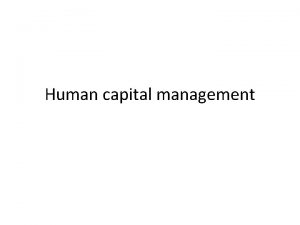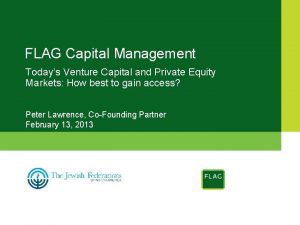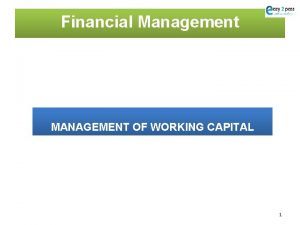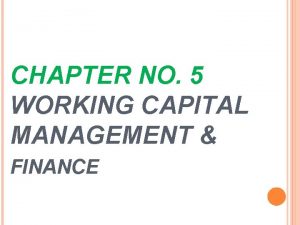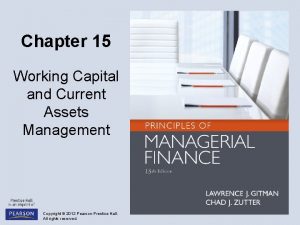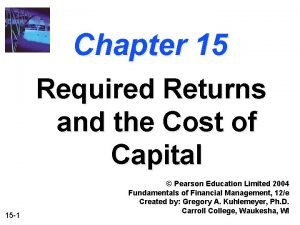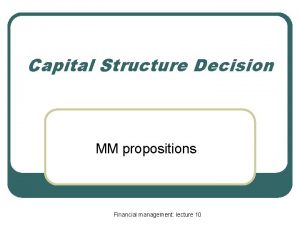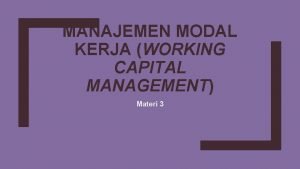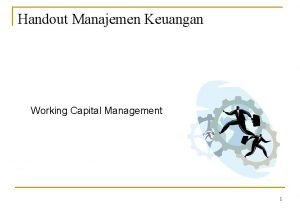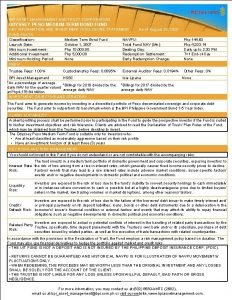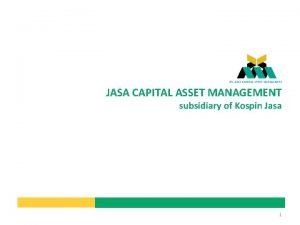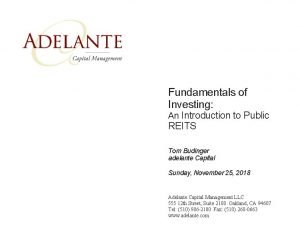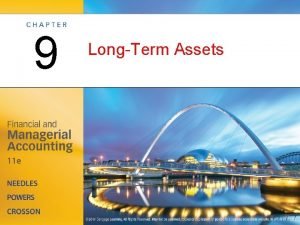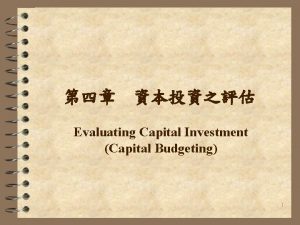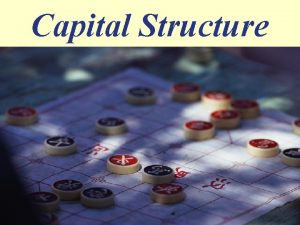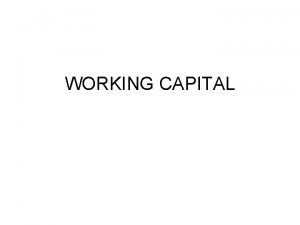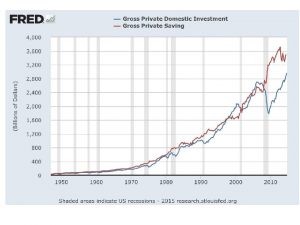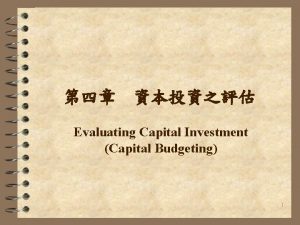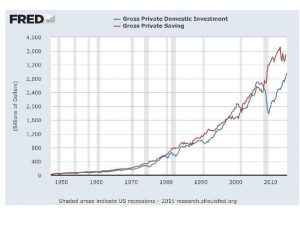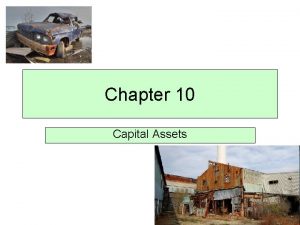LongTerm Capital Management 4 50 4 00 3

































- Slides: 33

Long-Term Capital Management $4. 50 4. 00 3. 00 2. 00 1. 00 0. 00 3/1994 1/1995 1/1996 1/1997 1/1998 Gross value of $1 invested March 1994 - October 1998 in LTCM When Genius Failed pp. xiv *** Bailouts Seminar Karen Bradshaw, Molly Grovak, Drew Navikas, Asha Spencer

Agenda • • Background Framework for analysis Was LTCM a bailout? Was LTCM successful (as a bailout)? Relevance to Current Crisis Conclusions Questions

LOANS ES S PR BA U O IL $ = T B 6. 3 E Black UR Bond ce perien g ex tradin Scholes ther % o 40 t p U rns retu iwe Merton Mullins INVESTMENTS Up to $1 trillion in derivatives LTCM $1. 25 billion up to $7 B down to $555 M PRES SURE LOANS

Background

Background

Background Russia defaults 80% loss over 5 weeks $4. 50 4. 00 3. 00 2. 00 1. 00 0. 00 3/1994 1/1995 1/1996 1/1997 1/1998 Gross value of $1 invested March 1994 - October 1998 in LTCM When Genius Failed pp. xiv





Background

Background MISFIRE Wall Street’s Rocket Scientists thought they had a surefire way to bear the markets. Boy, were they wrong! -Business Week, Sept 21, 1998

FRAMEWORK ASK Framework for Analysis Was LTCM a bailout? Was LTCM successful (as a bailout)? 1. Use case studies from class to define the criteria for determining a bailout/success 2. Consider whether LTCM qualifies as a bailout/success against the criteria 3. Determine whether LTCM was a bailout/success and how LTCM might impact the criteria

Was LTCM a bailout?

Was LTCM a Bailout? What makes something a bailout? Input of private parties Government intervention More like a bailout WHO Principals of the firm Existing creditors and stakeholders Market Players The Fed Treasury Congress

Was LTCM a Bailout? What makes something a bailout? Input of private parties Government intervention More like a bailout WHO Principals of the firm WHAT/ WHY Existing creditors and stakeholders Market facilitation Jumpstart private negotiations Market Players The Fed Treasury Government intervention More like a bailout Stopping a downward spiral Propping up firms during economic turbulence Congress Emulating private market when dysfunctional Gov’t intervention to pursue normative vision

Was LTCM a Bailout? What makes something a bailout? Input of private parties Government intervention More like a bailout WHO Principals of the firm Existing creditors and stakeholders Market Players GE Immelt bonus Law firm partners Chapter 11 Buffet & GS WHAT/ WHY Market facilitation Jumpstart private negotiations Chrysler 1979 The Fed Discount window BOA & Merrill Treasury Congress Detroit Today TARP HOLC Chrysler 1979 Government intervention More like a bailout Stopping a downward spiral Propping up firms during economic turbulence S&L Housing Detroit Today Chrysler 1979 Emulating private market when dysfunctional TARP Gov’t intervention to pursue normative vision Detroit Today American Dream: F&F

Was LTCM a Bailout? Yes yes! ~ NO Input of private parties Government intervention More like a bailout WHO Principals of the firm Existing creditors and stakeholders LTCM WHAT/ WHY Market Players LTCM Market facilitation The Fed Treasury LTCM Government intervention More like a bailout Jumpstart private negotiations Stopping a downward spiral LTCM Congress Propping up firms during economic turbulence Emulating private market when dysfunctional Gov’t intervention to pursue normative vision

Why does it matter? • Distributes the perception of responsibility – Bailout = needed rescuing/failure by managers – Not a Bailout = this was a function of regulatory choices and global markets • Sets criteria by which we measure success

Was LTCM successful (as a bailout)?

people impacted third party Short-term impact on third parties Short-term impact on first parties Long-term impact on third parties Long-term impact on first parties first party short-term long-term t

people impacted third party Short-term impact on third parties Short-term impact on first parties Shielding Stakeholders Long-term impact on third parties Long-term impact on first parties Reputational Harm Autos, S&L, Banks first party Saving Jobs Keeping Homes Chrysler, Detroit HOLC, F&F, S&L short-term long-term t

people impacted third party Short-term impact on third parties Long-term impact on third parties Home Ownership Public Policy S&L, F&F American Autos Chrysler, Detroit Economic Growth Panic/Confidence Easy Credit TARP Short-term impact on first parties Shielding Stakeholders Long-term impact on first parties Reputational Harm Autos, S&L, Banks first party Saving Jobs Keeping Homes Chrysler, Detroit HOLC, F&F, S&L short-term long-term t

people impacted third party Short-term impact on third parties Long-term impact on third parties Home Ownership Public Policy S&L, F&F American Autos Chrysler, Detroit Economic Growth Panic/Confidence Easy Credit TARP Short-term impact on first parties Shielding Stakeholders first party Long-term impact on first parties Reputational Harm Preserving Jobs Autos, S&L, Banks Chrysler, Detroit Saving Jobs Keeping Homes Chrysler, Detroit HOLC, F&F, S&L Moral Hazard Autos, S&L, Banks short-term long-term t

people impacted third party Short-term impact on third parties Home Ownership Public Policy S&L, F&F American Autos Chrysler, Detroit Economic Growth Panic/Confidence Easy Credit TARP Short-term impact on first parties Shielding Stakeholders first party Long-term impact on third parties Opportunity Cost Preserving Networks Chrysler, Detroit Preserving Jobs Autos, S&L, Banks Chrysler, Detroit Keeping Homes Chrysler, Detroit HOLC, F&F, S&L TARP, Chrysler, F&F Moral Hazard Market Learning S&L, Chrysler Long-term impact on first parties Reputational Harm Saving Jobs Barrier to Entry, Alternative Investment Moral Hazard Autos, S&L, Banks short-term long-term t

people impacted third party Short-term impact on third parties Long-term impact on third parties Home Ownership Public Policy S&L, F&F Opportunity Cost American Autos Chrysler, Detroit Economic Growth Panic/Confidence Easy Credit TARP Stopping Downward Short-term impact on first parties Spiral Shielding Stakeholders first party Preserving Networks Chrysler, Detroit Preserving Jobs Autos, S&L, Banks Chrysler, Detroit Keeping Homes Chrysler, Detroit HOLC, F&F, S&L Muting Economic Turbulence TARP, Chrysler, F&F Moral Hazard Market Learning S&L, Chrysler Long-term impact on first parties Reputational Harm Saving Jobs Barrier to Entry, Alternative Investment Moral Hazard Autos, S&L, Banks Chrysler, S&L short-term long-term t

people impacted third party Short-term impact on third parties Long-term impact on third parties Public Policy Economic Growth Opportunity Cost Panic/Confidence Stopping Downward Short-term impact on first parties Spiral Shielding Stakeholders Reputational Harm short-term Moral Hazard Long-term impact on first parties Preserving Jobs Muting Economic Turbulence first party Preserving Networks Moral Hazard long-term t

people impacted third party Short-term impact on third parties Long-term impact on third parties Public Policy Economic Growth Opportunity Cost Panic/Confidence + prevented credit meltdown Stopping Downward Short-term impact on first parties Spiral Shielding Stakeholders first party Reputational Harm + no huge costs in human capital + unwound at a profit + internalized losses + investors who got out early short-term Preserving Networks Moral Hazard +/- precedent for Fed involvement +/- avoided regulation Long-term impact on first parties Preserving Jobs Muting Economic Turbulence Moral Hazard + mitigated moral hazard long-term t

people impacted third party Short-term impact on third parties Long-term impact on third parties Public Policy Economic Growth Opportunity Cost Panic/Confidence + prevented credit meltdown Stopping Downward Short-term impact on first parties Spiral Shielding Stakeholders first party Reputational Harm + no huge costs in human capital + unwound at a profit + internalized losses + investors who got out early - reputational decline short-term Preserving Networks - benefit financial gaming - made quantitative investment less risky - “how to” rather than a ghost story Moral Hazard +/- precedent for Fed involvement +/- avoided regulation Long-term impact on first parties Preserving Jobs Muting Economic Turbulence Moral Hazard + mitigated moral hazard - didn’t continue as a going concern long-term t

Relevance to Current Crisis • Investment strategies • Market dynamics • Moral hazards

Conclusions • How do we put a stop to the learning gap without knee-jerk regulation? • What should LTCM have led the Fed and Treasury to ask about Bear and Lehman? • Why shotgun weddings without equity?

Questions?

LOANS ES S PR BA U O IL $ = T B 6. 3 E Black UR Bond ce perien g ex tradin Scholes ther % o 40 t p U rns retu iwe Merton Mullins INVESTMENTS Up to $1 trillion in derivatives LTCM $1. 25 billion up to $7 B down to $555 M PRES SURE LOANS
 Linux kernel longterm
Linux kernel longterm York will end longterm solitary jails
York will end longterm solitary jails Working capital requirement
Working capital requirement Difference between capital reserve and reserve capital
Difference between capital reserve and reserve capital Multinational capital structure
Multinational capital structure Difference between capital reserve and reserve capital
Difference between capital reserve and reserve capital Basle ii
Basle ii Regulatory capital vs economic capital
Regulatory capital vs economic capital Variable capital examples
Variable capital examples Multinational cost of capital and capital structure
Multinational cost of capital and capital structure Capital allocation line vs capital market line
Capital allocation line vs capital market line Top management and middle management
Top management and middle management Management pyramid
Management pyramid Middle level management
Middle level management Working capital management refers to
Working capital management refers to Human capital betekenis
Human capital betekenis Define hcm
Define hcm Flag capital management
Flag capital management Long term financing
Long term financing E&e capital management
E&e capital management Kinds of working capital
Kinds of working capital Management of current assets
Management of current assets Cost of capital in financial management
Cost of capital in financial management Cayenta payroll management
Cayenta payroll management What is working capital in financial management
What is working capital in financial management M&m propositions
M&m propositions Pengertian working capital
Pengertian working capital Forte sea capital kora management 900makhtarcoindesk
Forte sea capital kora management 900makhtarcoindesk Tvc formula
Tvc formula Trust fee bpi
Trust fee bpi Jasa capital asset management
Jasa capital asset management Adelante capital management
Adelante capital management Heinsohn hcm human capital management
Heinsohn hcm human capital management Strategic management of human capital
Strategic management of human capital
















